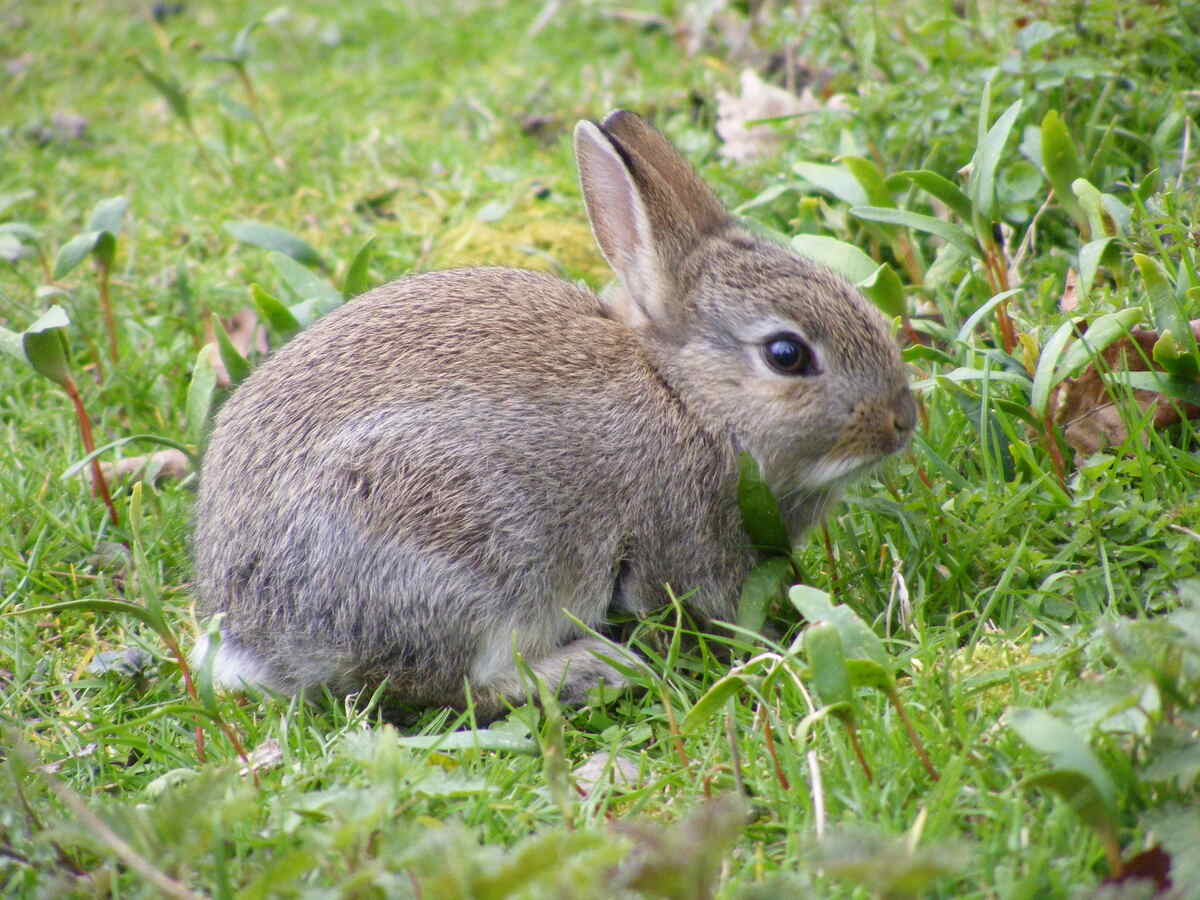
If you are seeing rabbits on your lawn or in your garden, head to your kitchen pantry, shower, or the hardware store. Ways to get rid of rabbits include using netting, pepper flakes, Lysol, talcum powder, and some Irish Spring shavings.
No, we’re not kidding about that last one.
Here’s everything you need to know to get those fluffy interlopers hopping off to a neighbor’s lawn or garden…
Proven Ways to Get Rid of Rabbits
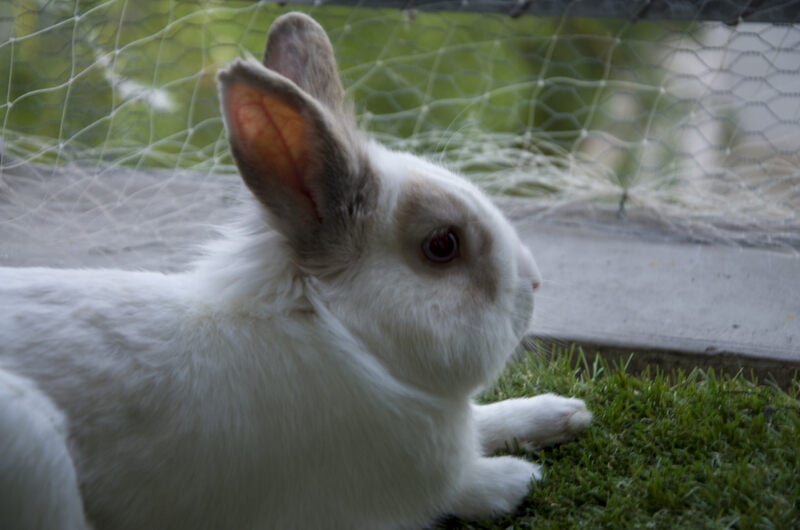
- Netting. Use some form of thin but strong netting that can be wrapped over the top of plants you want to protect. As a DIY project, you will need a lot of netting, and expect to invest some time setting this up.
- Wrap the trunks. Use 1/4-inch mesh hardware cloth to wrap the trunks of trees in your yard. Wrap them as high as rabbits can nibble, about 2½ feet from the ground.
- Powdered sulfur. It is considered the best rabbit repellent. Although sulfur is generally considered safe, follow the directions on the label for safe handling.
- Plain talcum powder. Similar to sulfur, but not as effective as a rabbit repellent. It is not pose a threat if some gets on the plants you plan to eat; in fact, you can dust your plants with it. And do it again after any rain, or hosing of the garden.
- Pepper flakes. Flakes of cayenne or red pepper work to repel rabbits. Spread this natural repellent on the ground around plants you want to protect, but remember to do it after a rain.
- Dried blood. Blood meal, which is powdered blood acquired from slaughterhouses (of cattle), can be mixed with water, enough to make it liquid, and spread as a rabbit repellent. Rabbits avoid it. However, it has to be reapplied after it rains. Don’t use blood meal if you have a dog because Spot will be attracted to the spot and dig it up. Over and over.
- Spray with Lysol. Mix a teaspoon of Lysol with a gallon of water to create a rabbit repellent and spray the garden or yard.
- Ultrasonic units, which rely on sound waves, are being marketed as a rabbit repellent. They will bother other animals, such as your pets, and the sounds make their way into neighbors’ yards, creating issues for them. Plus, ultrasonic pest control has not been proven effective.
Pro Tip: Trapping and removing rabbits won’t work. The rabbits you remove will be replaced by other rabbits from the same burrow or warren. This can occur quickly, perhaps while you are transporting the rabbit you trapped to a new location.
Believe-It-Or-Not Ways to Get Rid of Rabbits
These methods sound crazy, but some gardeners swear they work to get rid of rabbits. Bonus points: They will make great stories to tell your neighbors:
- Irish Spring soap. Fill small bags, perhaps of burlap, with the shavings of Irish Spring soap and hang them throughout your garden. Some gardeners swear by it, and they will tell you it also works against mice and deer. In theory, any deodorant soap will work, but when gardeners talk, they talk about this one brand.
- Sprinkle hair around. Rabbits will retreat from the smell of human hair (perhaps worried that it means a human is nearby), so sprinkle some around your yard. If you don’t have enough human hair, you can use pet hair. And remember: Hair enriches the soil. It is a fertilizer, and it provides support to roots as they break up thick soil.
- Party balloons. Place ones made of mylar above the area you want to protect. Or use mylar tape. Some believe it drives away rabbits.
- Pinwheels. Stick them in the ground in the yard to deter rabbits.
- Fake snakes. Rabbits will flee from snakes. Since you certainly don’t want to add real ones to your yard or garden, you can get rubber or plastic snakes. They will deter rabbits and can cost less than a dollar.
- Noise. Rabbits will flee from the slightest of sounds. A wind chime, for example, will cause rabbits to leave your yard. You can also place cans on a string (if you don’t mind the clanging).
- Rabbits themselves. Rabbits run from their own reflection, so it is likely that if you put up a bunch of reflectors, you will cause the rabbits to flee. In theory.
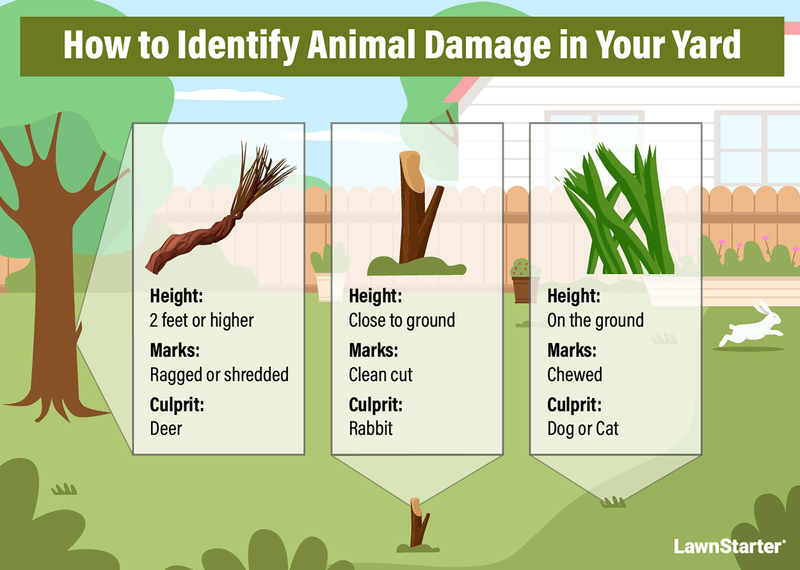
Signs You Have a Rabbit in Your Yard
- Clean-cut damage. Most animals leave jagged edges behind. But rabbits make a clean cut with sharp edges.
- Angled cuts. Rabbits are known for a distinctive kind of cuts, ones at an angle.
- Preferred meals. Rabbits go after flower heads, buds, and young stems up to ¼-inch in diameter.
- Signs of gnawing. The stems of woody plants, fallen twigs and branches in your yard will have been gnawed if you have rabbits.
- Low damage. The majority of their damage will be within 2½ feet of the ground.
Pro Tip: If the damage to your landscape occurs more than 2 feet high, it isn’t from a rabbit. It almost certainly is from a deer, and because deer have no upper front teeth, they twist and pull, leaving damage that is ragged.
Rabbit Nests: What to Look For
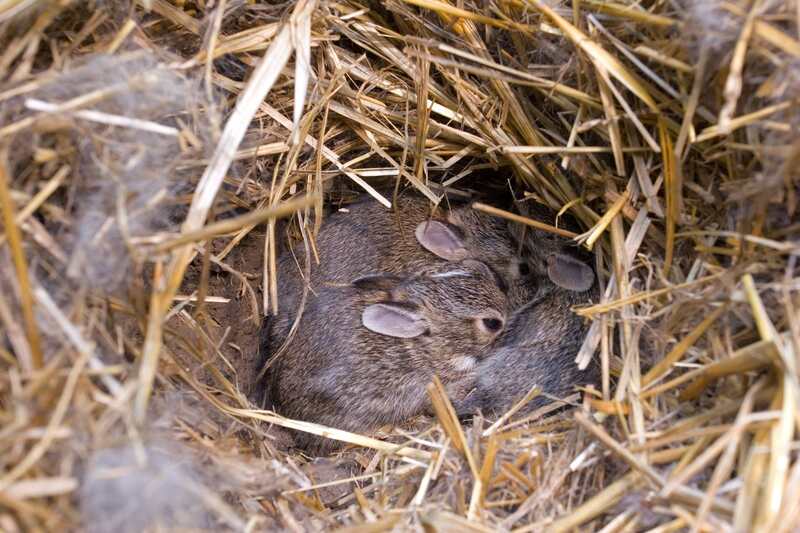
- In landscaped areas, nests and dens will turn up under cover, in brushy places (often by fences or the edges of fields), and in gullies that have shrubs.
- Females create a shallow bowl for a nest and cushion it with leaves, grass, and/or fur plucked from their bellies
- Burrows. Some rabbits excavate burrows for their den.
- Warrens. Some rabbits live in groups in large, complex burrow systems. These are what is meant by the term “warrens.”
- Sheds, porches, and low decks are places that can hide rabbits.
Pro Tip: If you notice small circles of sandy soil (about a foot across) or dry soil in your yard, it might be a sign you have rabbits. Here’s why: Rabbits will roll in such dust baths to rid their bodies of parasites, with grass or ground cover then rubbed away, leaving the circles.
How to Keep Rabbits out of Your Yard
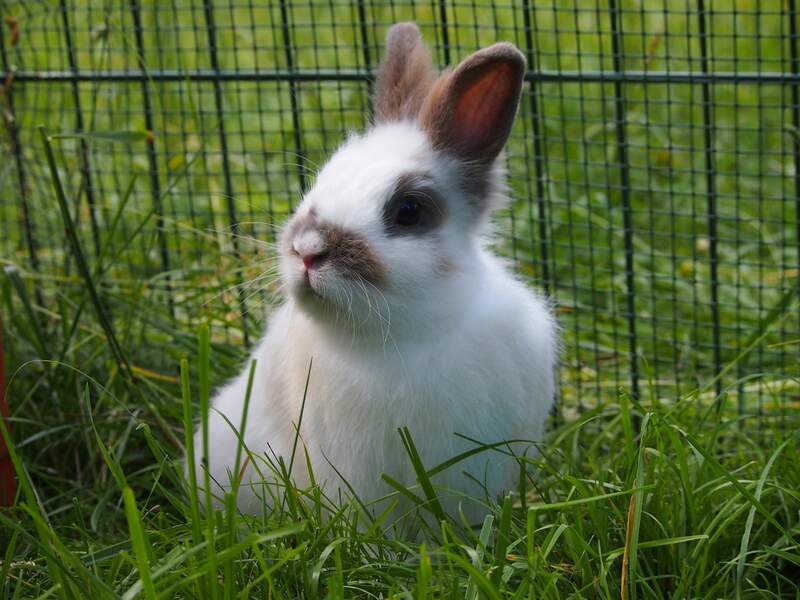
Exclusion
- Fencing is the most effective way to keep rabbits out of your yard. Install a 2-foot-tall fence of 1-inch chicken wire, held up by sturdy stakes every 4 to 6 feet apart. Rabbits will try to go under a fence, so bury it 6 inches deep, line the bottom with bricks or rocks, or bend it down in an “L” on the animal side.
- Raised garden beds. You can try building or installing raised garden beds, but these usually need to include a chicken wire fence to keep out rabbits and other wildlife.
Repellents
- Pungent plants. Plant asparagus, leeks, onions, garlic, squash, tomatoes, and/or peppers to create a perimeter that keeps rabbits away from the plants they (and you) like to eat.
- Repelling flowers. Sweet alyssum, cleomes, geraniums, marigold, salvia, wax begonias, and zinnias are flowers that repel rabbits. Plant them to protect your other flowers, most of which rabbits do like.
- Certain herbs: Rabbits dislike herbs such as basil, mint, oregano, parsley, and tarragon.
- Dogs and cats will keep rabbits out of your yard. If you have pets, let them spend at least part of the day in the garden area. And if your yard is big enough, you might get a cat just to take care of any mice and to keep rabbits away.
Pro Tip: Lavender and lilac bush also discourage rabbits, and might be better to look at and provide fragrance than the other options.
Habitat Modification
- Mow your lawn. Rabbits will hide in tall grass, yet another reason to mow your lawn, and to mow it the right way.
- Eliminate hiding places. Remove debris like brush piles or patches of weeds or tall grass that rabbits can use as hiding places.
- Fill the burrows. If you come across the burrows of other animals, such as woodchucks or skunks, dig them out and fill them in before rabbits move in.
When to Call a Pest Control Professional
Rabbit-proofing your yard or garden or trying to drive out the creatures can be just the kind of DIY project that appeals to you. But if it doesn’t, or if the rabbits keep coming, it is time to call a pest control expert near you for professional help.
Additional sources: Almanac.com, Premeditated Leftovers, Washington Dept. of Fish and Wildlife
Main Image Credit: Kevin Jump / Flickr / CC BY 2.0